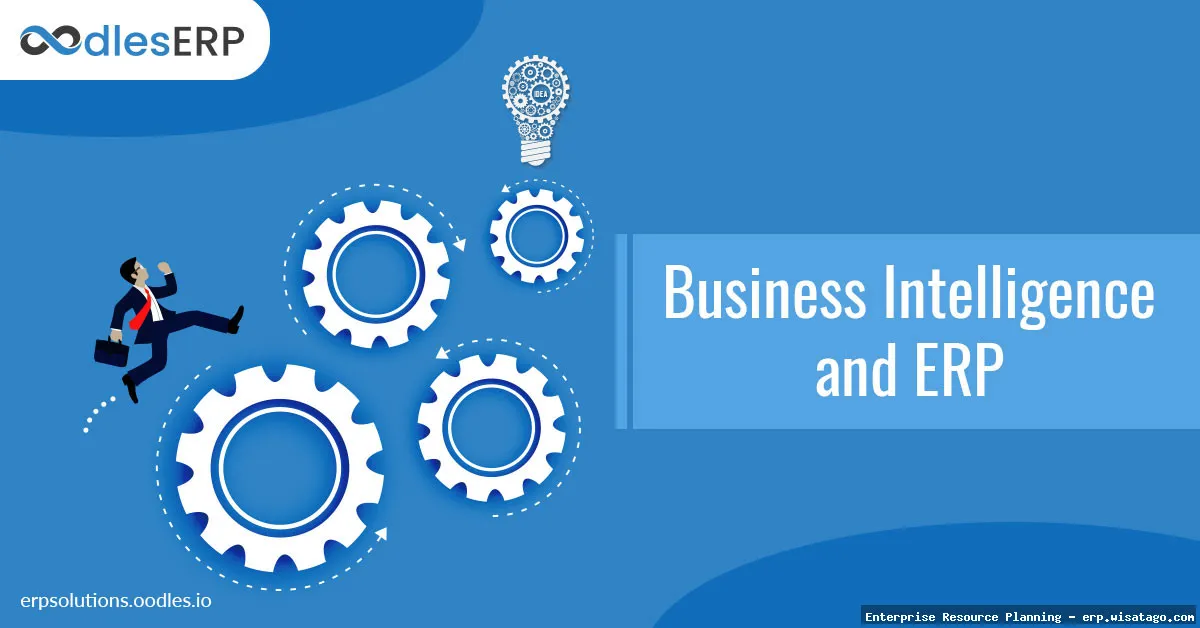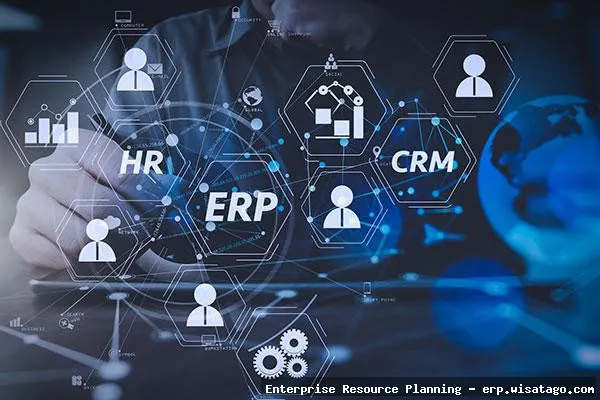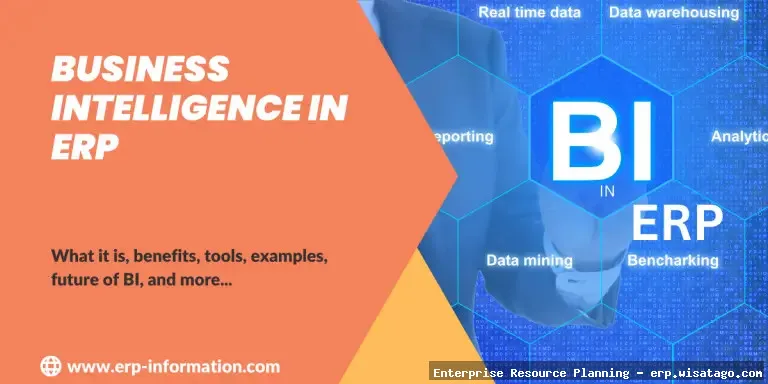Okay, let’s talk ERP. If you’re running a business, especially one that’s growing, you’ve probably heard the term tossed around. Enterprise Resource Planning (ERP) systems can seem like a daunting investment, a complex beast that only large corporations can tame. But the truth is, ERPs are becoming increasingly accessible and, frankly, essential for businesses of all sizes wanting to streamline operations, improve decision-making, and ultimately, boost profitability. The real magic happens when you integrate Business Intelligence (BI) directly into your ERP.
Think of your business as a complex machine. Each department – sales, marketing, manufacturing, finance – is a cog in that machine. An ERP system acts as the oil, ensuring all those cogs are spinning together smoothly, sharing information, and working towards a common goal. But simply having the machine running smoothly isn’t enough. You need to understand how it’s running, identify bottlenecks, and optimize performance. That’s where integrated BI comes in. It’s the dashboard that gives you real-time insights into every aspect of your operation.

This article will delve into the world of ERP solutions with integrated Business Intelligence. We’ll explore what they are, why they’re so powerful, the key features to look for, and how to navigate the often-challenging process of selecting and implementing the right system for your specific needs. I’ll be drawing on my own experiences working with ERP implementations, sharing some hard-won lessons and practical advice to help you make informed decisions and avoid common pitfalls. Let’s get started!
What is an ERP System with Integrated Business Intelligence?
At its core, an ERP system is a centralized platform that integrates various business functions into a single, unified database. Traditionally, departments operate in silos, using disparate systems and spreadsheets. This leads to data duplication, inconsistencies, and a lack of real-time visibility across the organization. An ERP breaks down these silos by providing a common platform for managing everything from financials and inventory to human resources and customer relationship management (CRM).
The Role of Business Intelligence
Business Intelligence (BI) takes the vast amounts of data generated by the ERP system and transforms it into actionable insights. It uses tools and techniques like data warehousing, data mining, online analytical processing (OLAP), and reporting to analyze trends, identify patterns, and predict future outcomes. When BI is integrated directly into the ERP, these insights become readily available to users across the organization, empowering them to make data-driven decisions in real-time.
Key Differences: Standalone BI vs. Integrated BI
While standalone BI solutions can be connected to an ERP system, integrated BI offers several advantages. Standalone BI requires extracting data from the ERP, transforming it, and loading it into a separate data warehouse. This process can be time-consuming, prone to errors, and result in data latency. Integrated BI, on the other hand, leverages the ERP‘s existing data structures and provides real-time access to information. This eliminates the need for complex data integration processes and ensures that users are always working with the most up-to-date information.
Benefits of ERP with Integrated BI
Implementing an ERP system with integrated BI offers a wide range of benefits that can significantly impact a company’s bottom line. These benefits extend across various departments and contribute to improved efficiency, decision-making, and overall business performance. As businesses grow and their needs become more complex, Advanced Erp Solutions become essential for streamlined operations
Improved Decision-Making
Perhaps the most significant benefit is the ability to make more informed decisions. With real-time access to key performance indicators (KPIs) and data-driven insights, managers can quickly identify problems, analyze trends, and take corrective action. For example, a sales manager can track sales performance by region, product, or salesperson and identify areas that need improvement. A production manager can monitor inventory levels, identify bottlenecks in the production process, and optimize resource allocation. This proactive approach to decision-making leads to better outcomes and improved business agility.
Increased Efficiency and Productivity
By automating tasks, streamlining processes, and eliminating data silos, ERP systems with integrated BI can significantly increase efficiency and productivity. For example, automating invoice processing can reduce the time and effort required to pay suppliers. Streamlining the order fulfillment process can reduce lead times and improve customer satisfaction. By providing a single source of truth for data, ERP systems eliminate the need for manual data entry and reconciliation, freeing up employees to focus on more strategic tasks.
Enhanced Visibility and Control
ERP systems provide a comprehensive view of all business operations, allowing managers to monitor performance, identify risks, and take corrective action. Integrated BI enhances this visibility by providing real-time dashboards and reports that track key metrics. This allows managers to stay on top of their business and make informed decisions based on accurate and timely information. For example, a CFO can monitor cash flow, track expenses, and forecast future financial performance. A supply chain manager can track inventory levels, monitor supplier performance, and optimize logistics.

Better Customer Service
By providing a 360-degree view of the customer, ERP systems with integrated BI can help businesses improve customer service. Sales representatives can access customer order history, payment information, and support tickets to provide personalized service. Marketing teams can use customer data to segment their audience and target their campaigns more effectively. Service technicians can access product information and troubleshooting guides to resolve customer issues quickly and efficiently. This improved customer service leads to increased customer satisfaction and loyalty.
Reduced Costs
While the initial investment in an ERP system can be significant, the long-term cost savings can be substantial. By automating tasks, streamlining processes, and improving decision-making, ERP systems can reduce labor costs, inventory costs, and other operating expenses. For example, automating invoice processing can reduce the cost of accounts payable. Optimizing inventory levels can reduce the cost of holding excess inventory. Improving demand forecasting can reduce the cost of stockouts and lost sales. In the long run, these cost savings can more than offset the initial investment in the ERP system.
Key Features to Look for in an ERP with Integrated BI
Choosing the right ERP system with integrated BI is a critical decision that can have a significant impact on a company’s success. It’s essential to carefully evaluate different solutions and select one that meets the specific needs of your business. Here are some key features to consider:
Real-Time Dashboards and Reporting
The BI component should offer intuitive dashboards and reporting capabilities that provide real-time insights into key performance indicators (KPIs). Users should be able to easily customize dashboards and reports to track the metrics that are most important to them. The system should also offer drill-down capabilities, allowing users to explore the underlying data and identify the root cause of problems.
Data Visualization Tools
Data visualization tools can help users quickly understand complex data sets. The BI component should offer a variety of charts, graphs, and other visual representations of data. These tools should be easy to use and allow users to quickly identify trends, patterns, and outliers. Managing these complex business processes often requires a dedicated system, ERP becoming a central hub for data and workflow management
.
Predictive Analytics
Predictive analytics uses statistical techniques to forecast future outcomes. The BI component should offer predictive analytics capabilities that can help businesses anticipate demand, identify potential risks, and optimize resource allocation. For example, predictive analytics can be used to forecast sales, predict customer churn, or optimize inventory levels.
Mobile Access
In today’s mobile world, it’s essential to have access to ERP data from anywhere, at any time. The ERP system should offer mobile apps that allow users to access dashboards, reports, and other key information from their smartphones or tablets. This allows users to stay connected to their business even when they’re on the go.
Customization and Scalability
The ERP system should be customizable to meet the specific needs of your business. It should also be scalable to accommodate future growth. Look for a system that offers a flexible architecture and allows you to add new modules and features as your business evolves.

Integration Capabilities
The ERP system should be able to integrate with other systems, such as CRM, e-commerce platforms, and supply chain management systems. This allows you to create a seamless flow of information across your organization and avoid data silos. API (Application Programming Interface) connectivity is key here.
Challenges and Considerations During Implementation
Implementing an ERP system is a complex project that requires careful planning and execution. There are several challenges that companies often face during implementation, and it’s important to be aware of these challenges and have a plan to address them.
Data Migration
Migrating data from legacy systems to the new ERP system can be a challenging and time-consuming process. It’s important to carefully plan the data migration process and ensure that the data is accurate and complete. Data cleansing is almost always necessary.
User Training
Proper user training is essential for a successful ERP implementation. Users need to be trained on how to use the new system and understand how it will impact their jobs. Without adequate training, users may be resistant to the new system and may not be able to use it effectively.
Change Management
Implementing an ERP system often requires significant changes to business processes. It’s important to manage these changes effectively and ensure that employees are on board with the new system. Communication is key.
Cost Overruns
ERP implementations can be expensive, and it’s important to carefully manage the budget. Unexpected issues can arise during implementation that can lead to cost overruns. It’s important to have a contingency plan in place to address these issues.
Choosing the Right Vendor
Selecting the right ERP vendor is crucial for a successful implementation. Consider factors like industry expertise, implementation methodology, support services, and the total cost of ownership. Don’t just focus on the initial price; consider the long-term costs of maintenance, upgrades, and support.
Conclusion
ERP solutions with integrated Business Intelligence are powerful tools that can help businesses streamline operations, improve decision-making, and boost profitability. By providing a centralized platform for managing all business functions and offering real-time insights into key performance indicators, these systems empower organizations to make data-driven decisions and achieve their strategic goals. While implementing an ERP system can be a complex undertaking, the long-term benefits can be substantial. By carefully planning the implementation process, choosing the right vendor, and providing adequate user training, businesses can successfully deploy an ERP system and realize its full potential.

Conclusion
In conclusion, the integration of Business Intelligence (BI) within Enterprise Resource Planning (ERP) systems represents a significant leap forward for modern businesses. We’ve explored how this synergy transforms raw data into actionable insights, empowering organizations to make more informed decisions, optimize processes, and ultimately, gain a competitive edge. By bridging the gap between operational data and strategic analysis, ERP solutions with integrated BI offer a holistic view of the business, facilitating better resource allocation, proactive problem-solving, and improved overall performance.
The benefits of adopting an ERP solution with embedded BI are clear: enhanced visibility, improved efficiency, and increased profitability. As businesses navigate an increasingly complex and data-driven landscape, the ability to quickly analyze and understand information is paramount. If you’re ready to unlock the full potential of your data and drive sustainable growth, we encourage you to explore the possibilities of ERP solutions with integrated Business Intelligence. Contact us today for a consultation and discover how we can help you transform your business into a data-driven powerhouse: Learn More Here.
Frequently Asked Questions (FAQ) about ERP Solutions with Integrated Business Intelligence
How can integrated business intelligence within an ERP solution help my business improve its decision-making processes and overall performance?
An ERP solution with integrated business intelligence (BI) provides a comprehensive view of your business data, enabling data-driven decision-making. By centralizing data from various departments like finance, supply chain, and sales, it eliminates data silos and provides a single source of truth. The integrated BI tools allow you to analyze trends, identify bottlenecks, and gain insights into key performance indicators (KPIs). For example, you can track sales performance against targets, analyze inventory levels to optimize stock, and identify areas for cost reduction. This improved visibility and analytical capability lead to better forecasting, resource allocation, and ultimately, improved overall business performance. Moreover, real-time data visualization helps in proactive problem-solving and capitalizing on emerging opportunities.
What are the key benefits of choosing an ERP system with built-in business intelligence versus integrating a separate BI tool with my existing ERP software?
Choosing an ERP system with built-in business intelligence offers several advantages over integrating a separate BI tool. Firstly, integration is seamless and requires less technical expertise. Data flows automatically between the ERP and BI modules, eliminating the need for custom connectors or manual data transfers, which can be prone to errors. Secondly, a built-in solution typically offers better performance and responsiveness, as the BI tools are optimized to work specifically with the ERP data structure. This translates to faster reporting and analysis. Thirdly, it simplifies maintenance and support. You have a single vendor to contact for any issues, rather than managing two separate systems and vendors. This streamlined approach reduces complexity, costs, and potential compatibility issues. However, a separate BI tool may offer more advanced analytics capabilities if your requirements are highly specialized.
What are some essential features to look for in an ERP solution that includes integrated business intelligence, specifically regarding reporting and data visualization capabilities?
When evaluating an ERP solution with integrated business intelligence, several key features related to reporting and data visualization are crucial. Look for customizable dashboards that allow users to track KPIs relevant to their roles. The system should offer a wide range of pre-built reports covering various aspects of the business, such as sales, finance, and inventory. Furthermore, the ability to create ad-hoc reports and perform drill-down analysis is essential for exploring data in detail. Strong data visualization capabilities, including charts, graphs, and heatmaps, are vital for presenting data in an easily understandable format. The ERP should also support real-time data updates to ensure that reports and dashboards reflect the most current information. Finally, ensure the system offers mobile accessibility for accessing reports and dashboards on the go. Consider features like predictive analytics and AI-powered insights for more advanced analysis.
